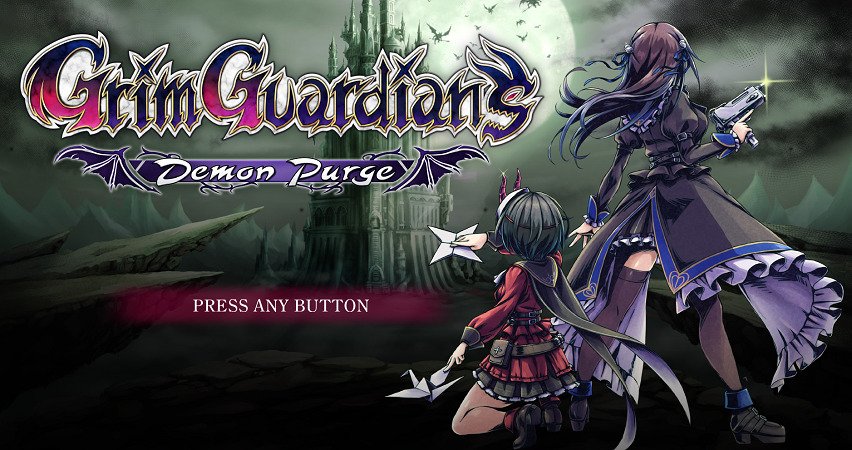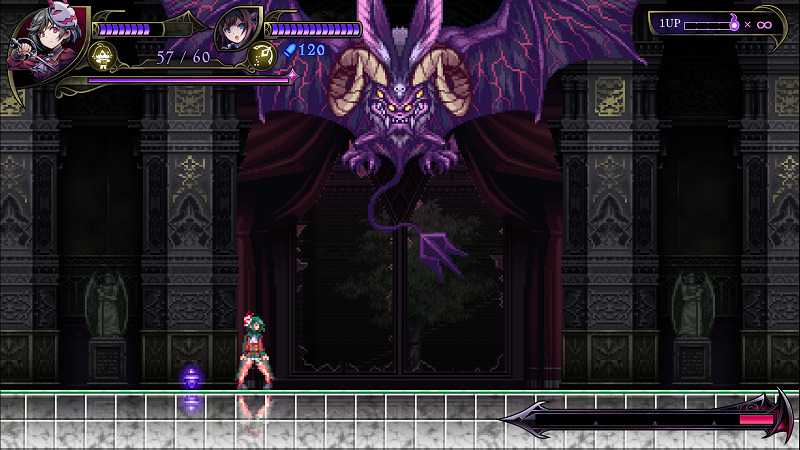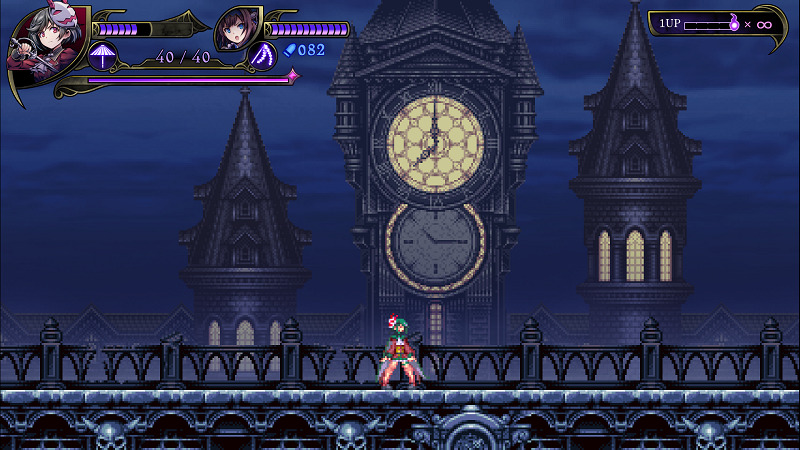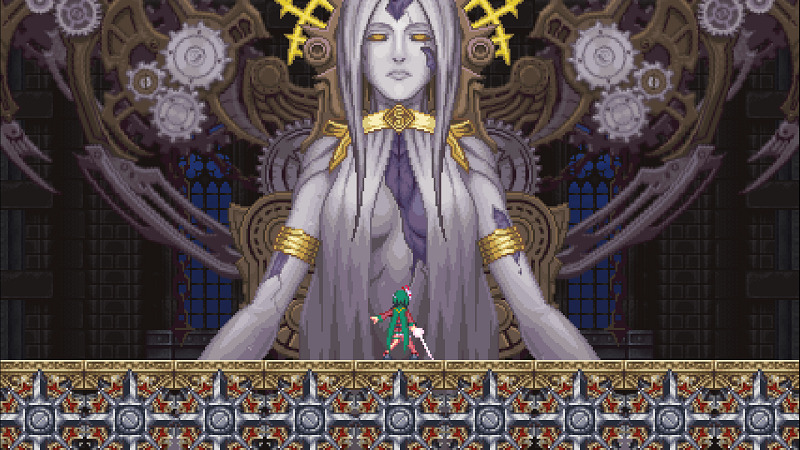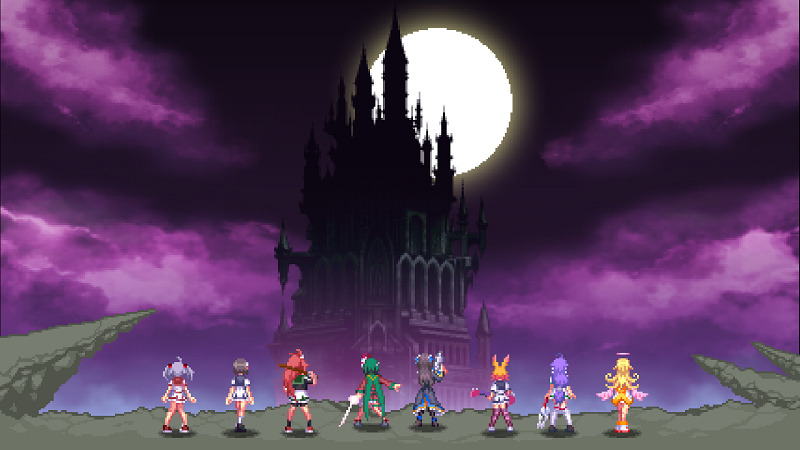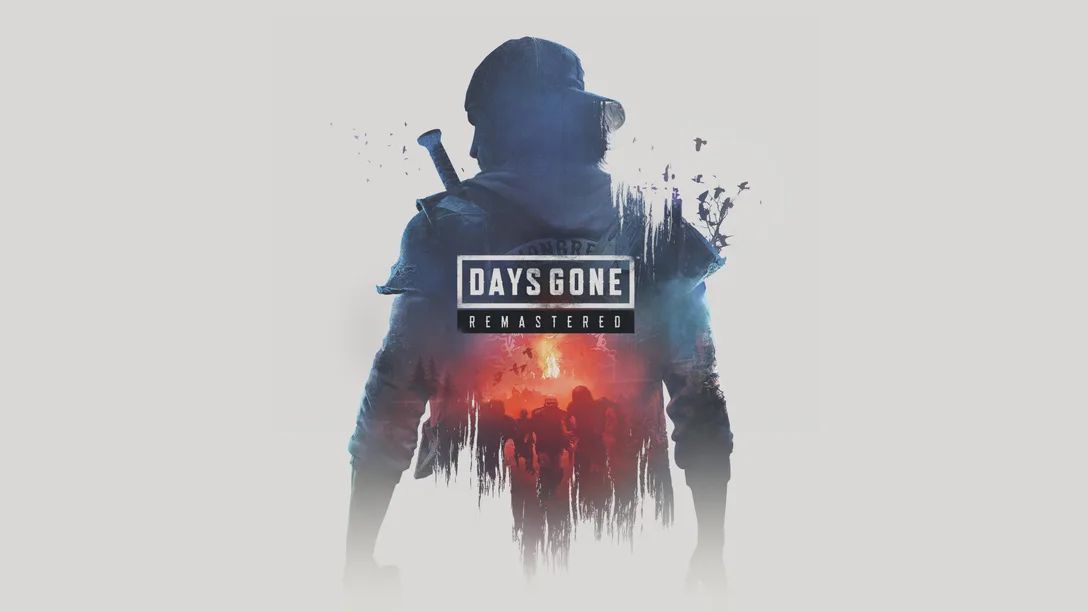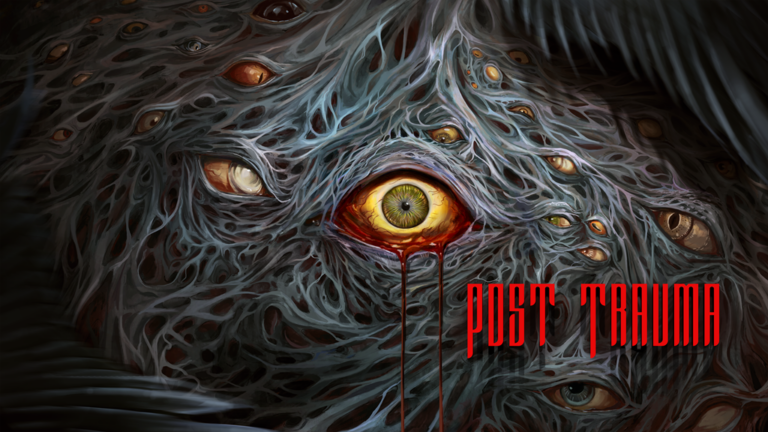(NOTE: The title of the game was officially changed after release, and is now called Gal Guardians: Demon Purge)
Grim Guardians: Demon Purge is the latest homage to the Castlevania series from Japanese developer Inti Creates, but instead of being set in the Bloodstained universe like their previous Curse of the Moon games, they chose to set the game in their own Gal*Gun universe.
In 2018, Inti Creates released the original Bloodstained: Curse of the Moon as a complement to the highly-anticipated Bloodstained: Ritual of the Night, which was due to release not long after. In 2020, the sequel was released and stayed fairly close to the first COTM game, being another faithful homage to the 8-bit era of Castlevania games.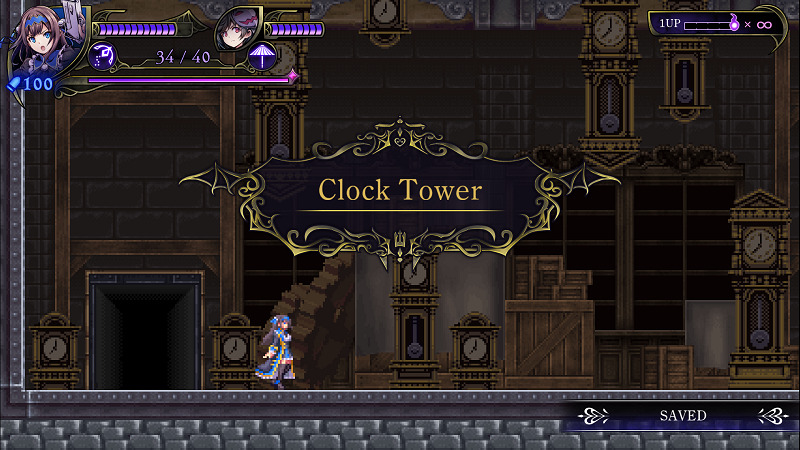
The Curse of the Moon games nailed everything about those retro action platformers, from the aesthetics and controls to just about every other detail of that era of Castlevania, along with a few updates for modern audiences. However, with Grim Guardians, Inti Creates has changed the focus of their homage from the 8-bit era of Castlevania to the games that immediately succeeded them, aiming more for the feel of Rondo of Blood and Symphony of the Night, which are arguably much better and more beloved entries in the series than the 8-bit entries.
Along with this new focus comes improved controls, better visuals, and many more stages and secrets to explore, along with the tongue-in-cheek, self-aware humor and aesthetics of the Gal*Gun series as an extra layer on top.
Grim Guardians: Demon Purge sticks much closer to the Rondo formula than Symphony, with many different stages to explore, and without having a sprawling overworld map to fill out as you progress.
This choice is a bit of a double-edged sword since most players expect a modern Castlevania-style game to have an accessible map screen. Because the developers decided to stick with the Rondo format so faithfully, instead of exploring a continuous map, you’re taken back to a stage select screen in between stages.
Accompanying this choice comes a bit of frustration in that the only way to exit the stages you’ve already played is to go all the way back to the beginning of the stage, finish the whole thing again, or risk going back to the main menu and loading your game. Thankfully, exiting to the main menu will save the majority of progress you’ve made, but it just adds a layer of tediousness where a proper mid-stage exit option would have gone a long way here. It makes sense, since this is done in the spirit of faithfulness to Rondo that they chose to not have this option, but feels like it should’ve been updated.
As mentioned, there isn’t an overworld map to use for navigation, but there is a compass feature that has been added to help you locate hidden items and secrets that act as a replacement for having the SOTN-style map, but it’s only effective within a limited range.
Despite these small nitpicks, the game is everything a fan of the genre and the early Castlevania series (Rondo especially) could hope for. It has tight gameplay, tons of fun secrets to find, gothic horror imagery, and gore galore, in addition to modern extras options and the slick veneer of Gal*Gun‘s cute and silly overtones as icing on the cake.
The gameplay manages to change things up enough by letting the player control two characters, who you can freely switch between on the fly, and who each have different abilities and attack types that can be used to keep the action more diverse and tactical, as opposed to something like Rondo. Alternatively, you can also have a second player join in local co-op, with each person controlling one of the characters and fighting together, similar to Curse of the Moon 2‘s co-op mode, but implemented a little better.
Each character’s sub-weapons feel unique and fun to use, and can all come in handy in various situations. This makes some encounters feel more like a puzzle rather than just a test of quick reflexes. It also makes them feel much less clunky than needing to find the exact right sub-weapon before each encounter like the Castlevania and Curse of the Moon series usually require.
After finishing the main story, you’re introduced to several new game mechanics and extra features, including the ability to go back to each of the stages you previously played with some new layouts, new reachable areas, and new boss patterns to keep things fresh as you hunt for the objectives and collectibles. This actually felt exciting and fun, since several types of weapon upgrades come at the same time, and it makes repeat stage visits much less of a chore than you might imagine.
The anime humor and aesthetics brought in from the Gal*Gun series feel like a small addition that doesn’t take anything away from the great gameplay. It can be an amusing distraction in between some stages, especially if you’ve played the series, since several characters make appearances throughout. The “ecchi” humor can be a little overbearing for those not used to more adult-leaning Japanese games, but it’s far tamer and subdued here than it is in the actual Gal*Gun games.
The low price of entry here feels just right for the amount of content here. It will likely take you 10-12 hours to get through the game’s story and find all the items and secrets on a first run. There’s also a Boss Rush mode that tests your skill against the multitude of bosses and their patterns, with a lot of extra options within that mode.
Grim Guardians: Demon Purge is another great entry in the platform-adventure genre and one that fans of Castlevania, Bloodstained, or Curse of the Moon will no doubt enjoy. It’s more well-rounded than the COTM series overall, and even though it doesn’t reinvent the wheel or push the genre forward in any substantial way, it’s still a wonderful homage to everything we love about this style of the game presented in a fun way, even if some of the faithfulness results in slightly antiquated features.
 (9 / 10)
(9 / 10)
Amazing
 (9 / 10)
(9 / 10)Rely on Horror Review Score Guide
Review code provided by the publisher for the Xbox platform. The game was also tested on Steam for performance.

 IDOLxISxDEAD
IDOLxISxDEAD